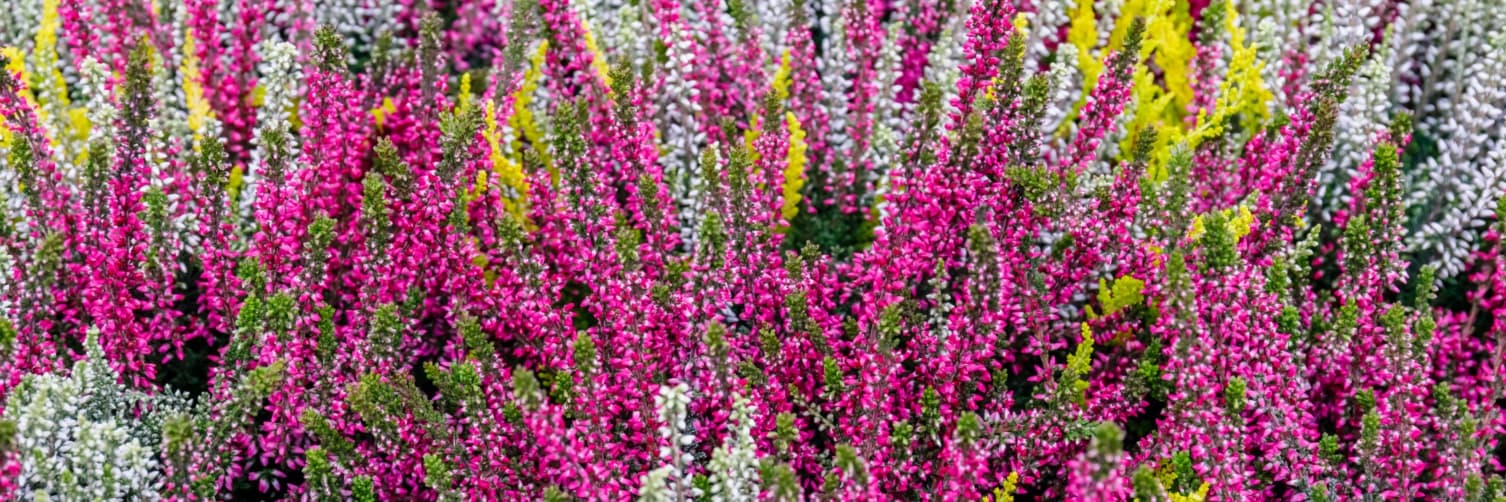Our hundreds of growing guides are each reviewed by RHS Master Horticulturists.
Our contributors include RHS Gold Medallists, estate gardeners, society members and more!
Heather, in the broadest sense, is the common name given to plants in the Ericaceae family of flowering plants.
Plants in the Ericaceae family can be herbs, sub-shrubs, shrubs and trees. Typically, they are evergreen.
When we think about the term heather, however, most gardeners will picture certain (usually evergreen) shrubs in the genera Erica and Calluna. Erica is sometimes referred to as ‘winter heather’, while Calluna species are referred to as ‘summer heather’.
Erica and Calluna species are grown in many gardens for their decorative effect – they are frequently seen in planting schemes for acidic soils, along with conifers.
They are well known for their capacity to create massed ground cover beneath conifers and dwarf conifers, and for providing colour and interest all year round. Heathers can also often work well in pots or containers to provide interest over the colder months.
When heather first springs to mind, UK gardeners are most likely to picture the heather that is found widely distributed in the hills of Scotland, and in upland regions elsewhere in the British Isles.
This heather is Calluna vulgaris and there are many named cultivars of this heather to choose from – but there are also a number of other heathers grown in the UK in gardens, including:
You can purchase heathers in garden centres, plant nurseries or online as small or large plants all year round. Typically they are not expensive to buy and are sold in pots of 9cm or larger.
Heathers and heaths in the Calluna and Erica genus’ are best planted out, however, in spring or in autumn, when the temperatures and moisture levels are generally best for avoiding transplantation shock.
If heathers are grown in the ground, then spring is generally the best choice – though if you plan on growing heather in containers, then autumn is a good time to start.
Heathers typically prefer acidic soil conditions, but other than this they can be relatively unfussy and low-maintenance plants.
They tend to prefer plenty of sun, and free-draining soil. Though they do not require particularly high fertility (as they have evolved in nutrient-poor heathland) they will prefer a soil structure with plenty of organic matter.
You may need to acidify the soil in your area in order to grow heather successfully.

Avoid planting most heathers in a particularly alkaline environment.
However according to the RHS, there are some, such as Erica carnea and E x darleyensis, which can cope with heavier, more alkaline soils.
Generally speaking, you should avoid deep shade, and overly damp conditions.
